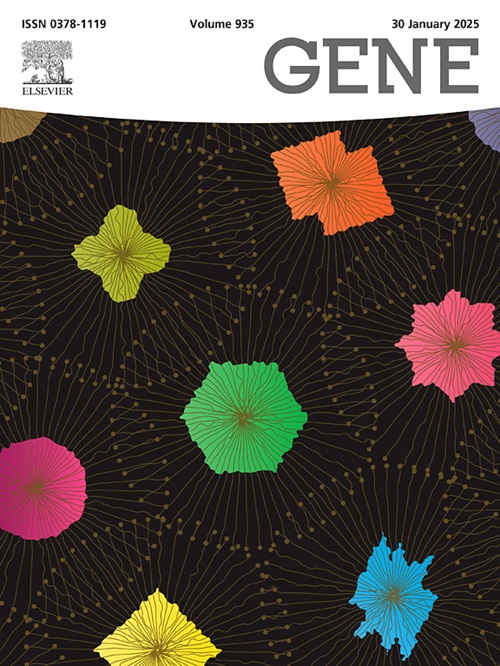Interallelic gene conversion of leukemia-associated single nucleotide variants
IF 2.6
3区 生物学
Q2 GENETICS & HEREDITY
引用次数: 0
Abstract
CRISPR-Cas9 is a useful tool for inserting precise genetic alterations through homology-directed repair (HDR), although current methods largely rely on provision of an exogenous repair template. Here, we tested the possibility of interchanging heterozygous single nucleotide variants (SNVs) using mutation-specific guide RNA, and the cell’s own wild-type allele rather than an exogenous template. Using high-fidelity Cas9 to perform allele-specific CRISPR across multiple human leukemia cell lines as well as in primary hematopoietic cells from patients with leukemia, we find high levels of reversion to wild-type in the absence of exogenous template. Moreover, we demonstrate that bulk treatment to revert a truncating mutation in ASXL1 using CRISPR-mediated interallelic gene conversion (IGC) is sufficient to prolong survival in a human cell line-derived xenograft model (median survival 33 days vs 27.5 days; p = 0.0040). These results indicate that IGC is a useful laboratory tool which can be applied to numerous types of leukemia and can meaningfully alter cellular phenotypes at scale. Because our method targets single-base mutations, rather than larger variants targeted by IGC in prior studies, it greatly expands the pool of genetic lesions which could potentially be targeted by IGC. This technique may reduce cost and complexity for experiments modeling phenotypic consequences of SNVs. The principles of SNV-specific IGC demonstrated in this proof-of-concept study could be applied to investigate the phenotypic effects of targeted clonal reduction of leukemogenic SNV mutations.
白血病相关单核苷酸变异的等位基因间转化
CRISPR-Cas9是通过同源定向修复(HDR)插入精确遗传改变的有用工具,尽管目前的方法主要依赖于提供外源性修复模板。在这里,我们测试了使用突变特异性引导RNA和细胞自身的野生型等位基因而不是外源模板互换杂合单核苷酸变异(snv)的可能性。使用高保真Cas9在多种人类白血病细胞系以及白血病患者的原代造血细胞中执行等位基因特异性CRISPR,我们发现在缺乏外源模板的情况下,高水平地还原为野生型。此外,我们证明,使用crispr介导的等位基因间转换(IGC)来恢复ASXL1的截断突变的大量治疗足以延长人类细胞系来源的异种移植模型的生存期(中位生存期33天vs 27.5天;p = 0.0040)。这些结果表明,IGC是一种有用的实验室工具,可以应用于多种类型的白血病,并可以大规模地改变细胞表型。由于我们的方法针对的是单碱基突变,而不是先前研究中IGC针对的更大的变异,因此它极大地扩展了可能被IGC靶向的遗传病变的范围。该技术可以降低snv表型结果建模实验的成本和复杂性。在这个概念验证研究中证明的SNV特异性IGC的原理可以应用于研究靶向克隆减少致白血病SNV突变的表型效应。
本文章由计算机程序翻译,如有差异,请以英文原文为准。
求助全文
约1分钟内获得全文
求助全文
来源期刊

Gene
生物-遗传学
CiteScore
6.10
自引率
2.90%
发文量
718
审稿时长
42 days
期刊介绍:
Gene publishes papers that focus on the regulation, expression, function and evolution of genes in all biological contexts, including all prokaryotic and eukaryotic organisms, as well as viruses.
 求助内容:
求助内容: 应助结果提醒方式:
应助结果提醒方式:


